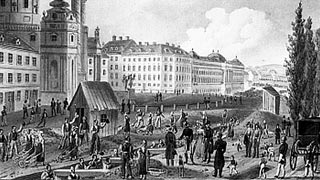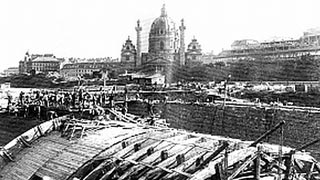Vienna’s sewer system in the modern period
With the construction boom after the second siege of Vienna by the Turkish army in 1683, the city's sewer system continued to grow as well. Most new buildings were connected to the city's sewers. As a result, Vienna became one of the most advanced cities in terms of sewerage in Europe in the 19th century. In 1739, Vienna was the only city to be fully sewered within the city walls.
Other cities of a similar size did not start planning and building their sewer systems to this extent until decades later. Despite this, the city was often swept by deadly plagues because the residents of the communities on the periphery of Vienna not only discharged their waste into the open brooks flowing through the Vienna Woods but also used the contaminated water for washing and drew drinking water from well houses located close to the brooks.
The most tragic event occurred in 1830, when an unusually large ice jam on the Danube caused the brooks and rivers around Vienna to burst their banks. The resulting cholera outbreak cost over 2,000 lives.
Sewer boom

Emperor Francis I and his wife Carola Augusta viewing the progress of the construction of the sanitary collector sewer ("cholera sewer") at St. Charles' Church, 1832
Immediately following this disaster, the decision was made to cover all important streams in the city and its environs. Additionally, two main collector sewers were built parallel to the River Wien, which led to the Danube (referred to as River Wien main collectors or "cholera sewers"). By 1850, Vienna had a well-functioning sewer system.
After the city walls and the outer fortification, which had been built around the surrounding communities, were torn down and 33 suburbs were incorporated into the administrative territory of Vienna, comprehensive and uniform urban planning became possible. In 1893 and 1894, construction of additional large collector sewers to the left and right of the Danube Canal began.
City of Vienna | Vienna Waste Water Management
Contact form



